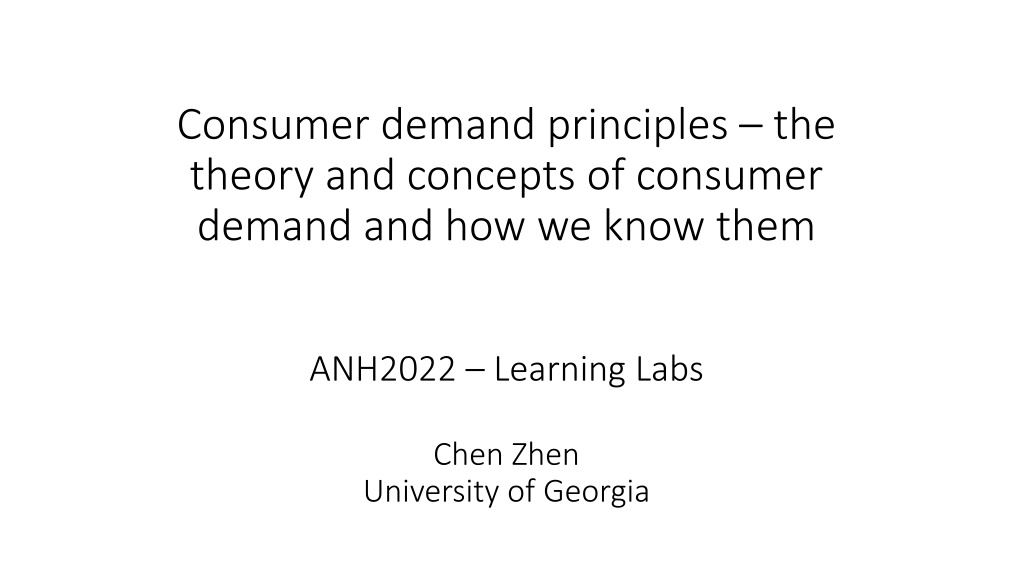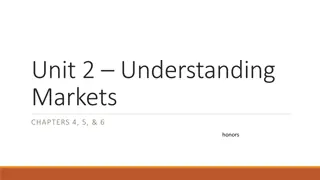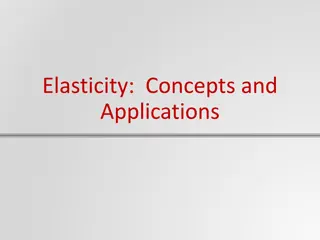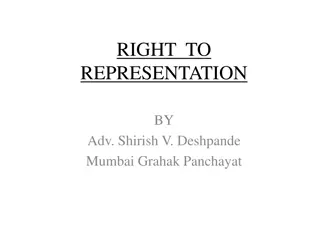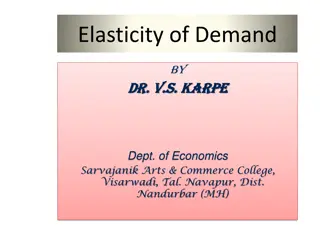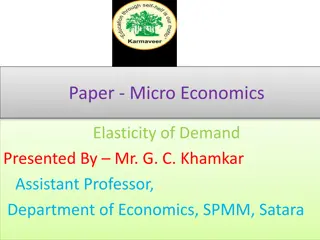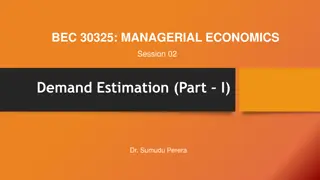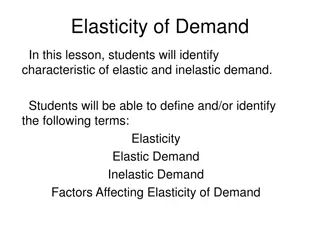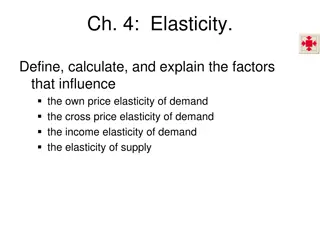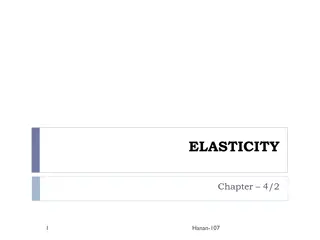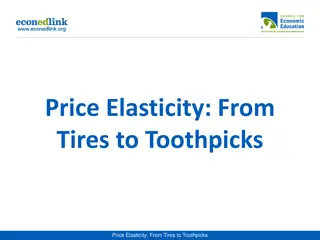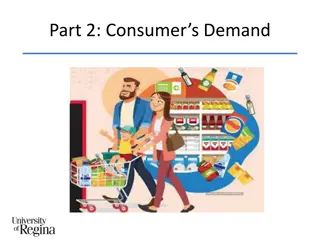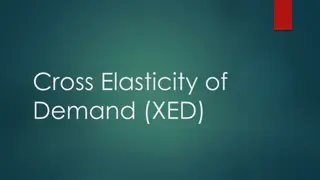Understanding Consumer Demand Principles and Elasticity Theories
Explore the theory of consumer demand, including the principles of price-demand relationship, homogeneity, symmetry, and price elasticity. Delve into the concepts of own-price elasticity, cross-price elasticity, and expenditure elasticity to understand how changes in prices and income affect consumer behavior. Discover how these theories help analyze consumer preferences and market dynamics.
Download Presentation

Please find below an Image/Link to download the presentation.
The content on the website is provided AS IS for your information and personal use only. It may not be sold, licensed, or shared on other websites without obtaining consent from the author. Download presentation by click this link. If you encounter any issues during the download, it is possible that the publisher has removed the file from their server.
E N D
Presentation Transcript
Consumer demand principles the theory and concepts of consumer demand and how we know them ANH2022 Learning Labs Chen Zhen University of Georgia
Theory of Consumer Economics First principle: when price goes up, demand comes down. If you plot price on the vertical axis against demand on the horizontal axis, you get what we call the demand curve. It should always be downward sloping. Two other predictions (not always empirically supported): 1. Homogeneity: when all prices and income go up by the same proportion, demand does not change. In other words, consumers view their income in real terms 2. Symmetry: the effect of good A price on good B demand is the same as the effect of good B price on good A demand.
Price Elasticity of Demand How much does demand change when a price changes? o Own-price elasticity: How much does demand for good A change when the price of good A changes? Own-price elasticity must be negative -- an own-price elasticity of 0.8 means that a 10% increase in good A price leads to a 8% decline in good A demand. A good is price-elastic if own-price elasticity <-1 (e.g. soft drinks, average is -1.2) A good is price-inelastic if own-price elasticity >-1 (e.g. cigarettes, average is -0.4)
Price Elasticity of Demand How much does demand change when a price changes? o Cross-price elasticity: How much does demand for good A change when the price of good B changes? oCross-price elasticity can be positive or negative oA positive cross-price elasticity: A and B are substitutes (e.g., regular soda and low-calorie soda) o Suppose the price of regular soda increases by 10% and the cross-price elasticity is 0.3. o Demand for low-calorie soda will increase by 3% with the regular soda price increase as consumers substitute towards low-calorie soda. oA negative cross-price elasticity: A and B are complements (e.g., coffee and cream)
Expenditure Elasticity of Demand How much does demand change when total expenditures (i.e. income) change? oExpenditure elasticity of demand >1: Luxury good oExpenditures increase by 10%, the quantity demanded increases by more than 10% (e.g., caviar) oExpenditure elasticity of demand between 0 and 1: Normal good oExpenditures increase by 10%, quantity demanded increases by 5% (e.g., kale) oExpenditure elasticity of demand <0: Inferior good oExpenditures increase by 10%, quantity demanded decreases (e.g., value brand toilet paper)
Expenditure Elasticity of Demand Most food demand studies estimate the elasticity of food group demand with respect to total food expenditure (rather than total household expenditure). This is inappropriate if the goal is to inform policy! Why? Total food expenditure is not exogenous to food prices. That is, when food prices change, total food expenditures also change. When a policy affects food prices, economists modeling conditional demand cannot hold food expenditures unchanged to simulate the effect of the policy on food demand.
The Econometrics Economic theory offers predictions on direction of consumer response to price and income changes How much consumers respond is an empirical question Econometrics: the statistical measurement of economic relationships using data. Econometric food demand models: Estimate the shapes of demand curves with respect to prices and incomes Measure how demand curves vary with tastes, household characteristics, and culture/geography. Food demand models are often structural: We estimate demand as a system to account for cross-price (as well as own- price) effects We impose restrictions implied by economic theory
Bringing Data to Bear on the Economic Model Q0 QBB QDD 8
